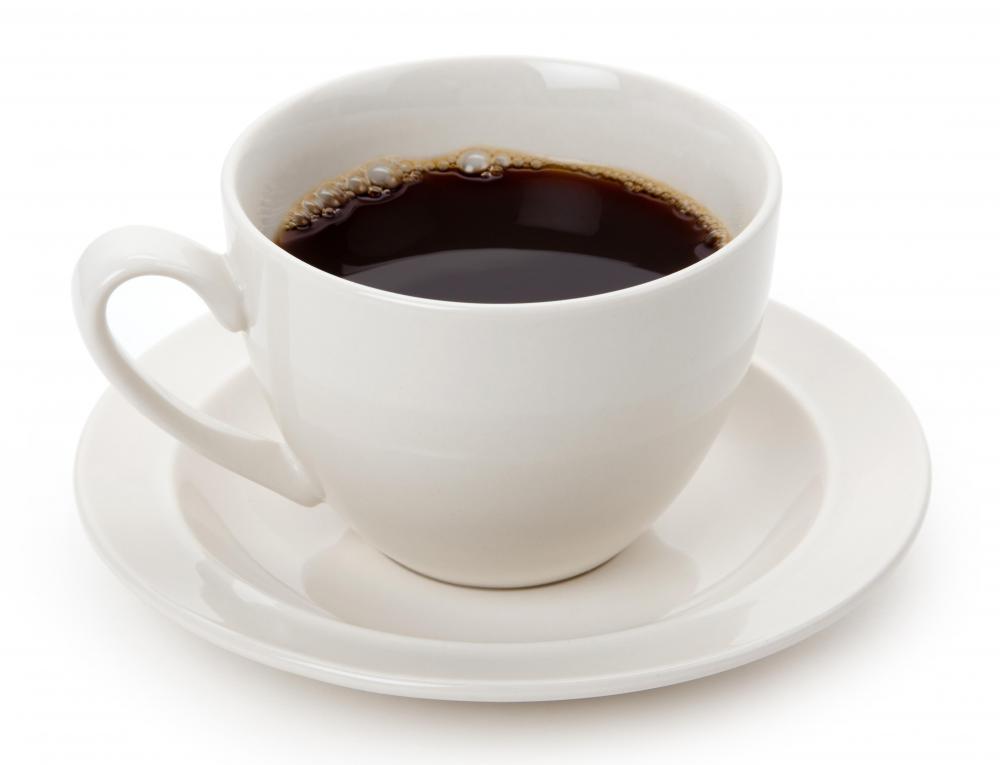At WiseGEEK, we're committed to delivering accurate, trustworthy information. Our expert-authored content is rigorously fact-checked and sourced from credible authorities. Discover how we uphold the highest standards in providing you with reliable knowledge.
How Much Caffeine is in Coffee?
The amount of caffeine present in coffee is actually highly variable, depending on a number of factors including the individual plant the beans are harvested from, how the beans are processed, and how the coffee is prepared. A single cup of regular coffee can contain between 65 and 175 milligrams of caffeine. A more concentrated coffee, like espresso, can contain around 50 milligrams in a single serving, while decaffeinated coffees contain approximately 2 to 4 milligrams in a serving.
The first variable involved in determining how much caffeine is in coffee is the type of plant the beans come from. The Coffea arabica plant, preferred for coffee production because the beans tend to have a superior flavor, has less caffeine than the C. robusta plant. Sometimes producers make blends with beans from both species to balance flavor with the desire for more caffeine. Individual coffee plants also produce various levels of caffeine depending on the varietal, where it is grown, and how it is handled during the growing period.

When coffee beans are harvested, they already have wildly varying levels of caffeine, not just from plant to plant, but sometimes on the same plant. The amount of caffeine present in coffee is also determined by how the beans are stored, handled, and processed. In addition to being explicitly decaffeinated with chemical treatments, the beans can also be exposed to heat, moisture, and other conditions, all of which have an impact on caffeine content.

Whether consumers work with ground coffee or whole beans they grind themselves, the way they prepare their coffee has an impact on the amount of caffeine present in each cup. Using more grounds will increase the caffeine level, as can varying the amount of heat and pressure the beans are subjected to. Espressos, for example, have a high caffeine content because they are made with tightly packed beans subjected to high heat and pressure, leading to higher caffeine extraction than with drip or brewed coffee.

Some studies have been conducted on the average caffeine content found in popular varietals of coffee. Many of these studies are not very useful for consumers interested in caffeine consumption, however, because too many variables are involved, from the year the beans were harvested to how the researchers handled them when they performed tests. People looking for more caffeine may want to seek out drip brewed coffees and espressos. Instant coffees tend to have less caffeine.
AS FEATURED ON:
AS FEATURED ON:















Discuss this Article
Post your comments